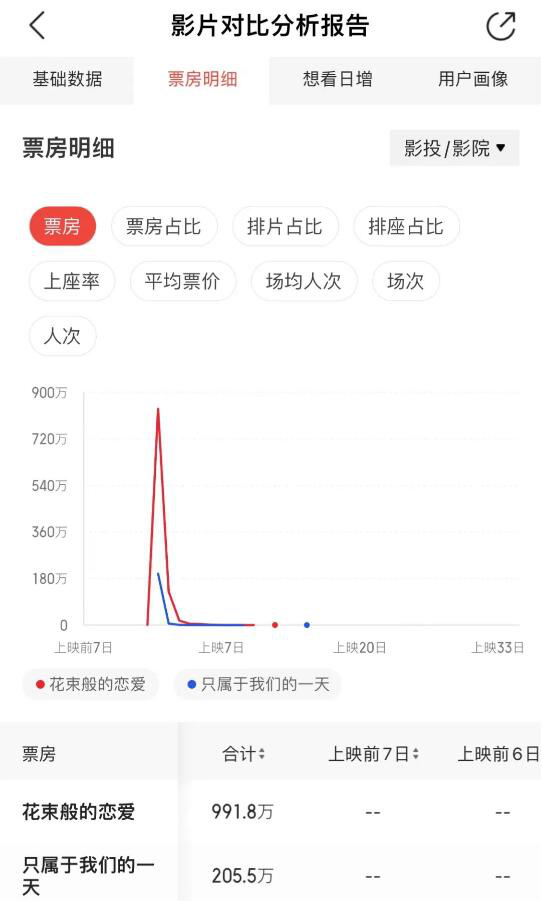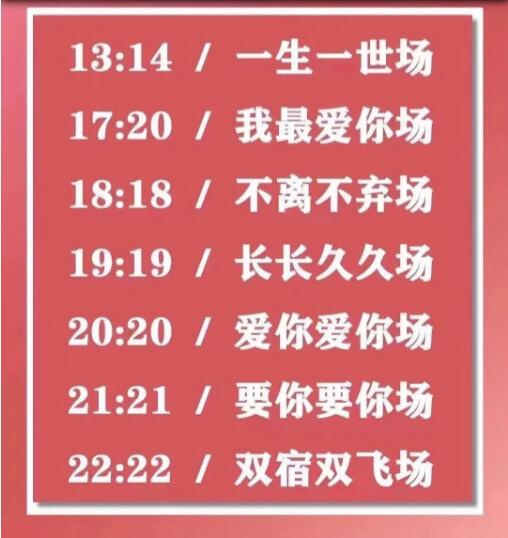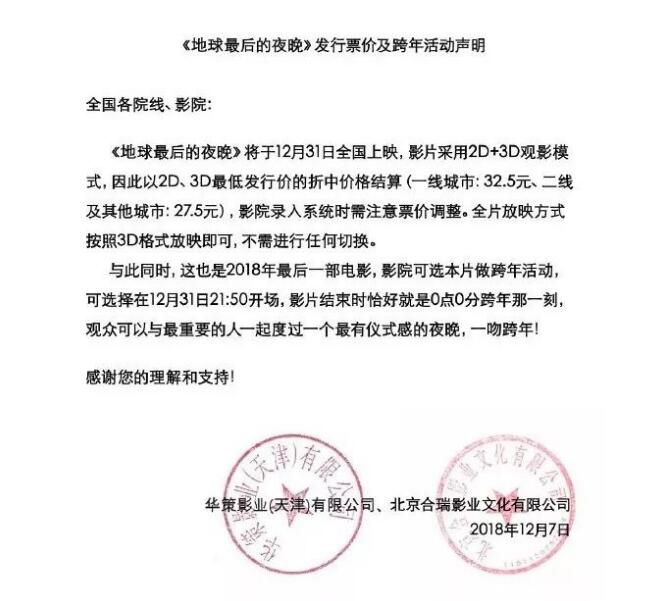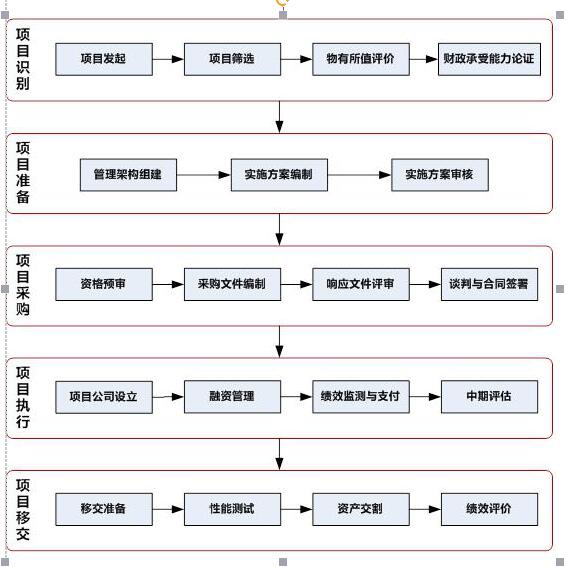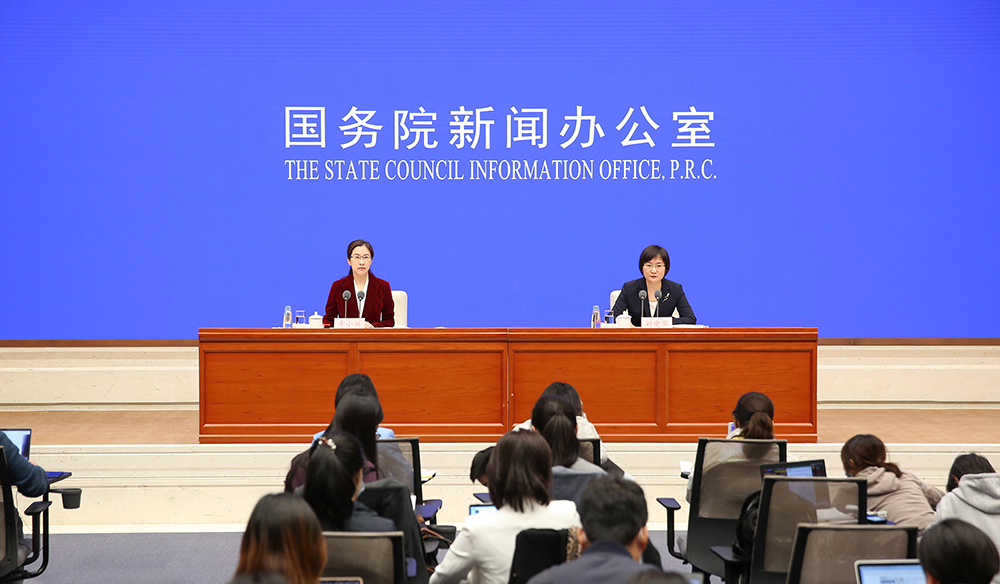Small and medium-sized enterprises are the largest and most dynamic enterprise groups in China, which play an important role in economic growth, scientific and technological innovation, solving employment and ensuring people’s livelihood. The CPC Central Committee and the State Council have always attached great importance to the development of small and medium-sized enterprises, constantly improved policies and measures to support the development of small and medium-sized enterprises, and actively improved the survival and development environment of small and medium-sized enterprises. aim at2011Since, small and medium-sized enterprises, especially small and micro enterprises, have faced many outstanding problems, such as high operating pressure, rising costs, financing difficulties and heavy taxes and fees. the State Council issued the Opinions of the State Council on Further Supporting the Healthy Development of Small and Micro Enterprises in a timely manner. The Ministry of Finance has actively implemented the central decision-making arrangements and issued a series of policies and measures to support the development of small and medium-sized enterprises, especially small and micro enterprises.
I. Financial Policy for Supporting Small and Micro Enterprises
According to the Law on the Promotion of Small and Medium-sized Enterprises and other laws and regulations, the central government has successively set up special funds (funds) such as technological innovation fund for small and medium-sized enterprises, special funds for the development of small and medium-sized enterprises, special funds for the development of international markets for small and medium-sized enterprises, special funds for the development of small and medium-sized commercial enterprises, and special subsidies for the public service system for small and medium-sized enterprises to support the development of small and medium-sized enterprises, especially small and micro enterprises. The scale of funds has increased year by year, as of2011At the end of the year, accumulated funds will be arranged.561.8100 million yuan. Highlighted the following support priorities:
First, vigorously support technological innovation of small and medium-sized enterprises and promote the transformation of scientific and technological achievements. Focus on supporting small and medium-sized science and technology enterprises, and carry out technological innovation in high-tech fields such as electronic information, new energy and energy efficiency, new materials, biomedicine and high-tech service industry; Guide venture capital institutions to invest in small and medium-sized science and technology enterprises in the initial stage, and support the entrepreneurship and technological innovation of small and medium-sized science and technology enterprises in the initial stage; Encourage public technical service institutions to carry out innovative resource sharing, professional technology and technology transfer services around small and medium-sized enterprises.
The second is to support small and medium-sized enterprises to optimize industrial structure, save energy and reduce emissions and expand employment. Support the structural adjustment and professional development of small and medium-sized enterprises in key industries and cooperate with large enterprises to take the road of "specialization, precision, specialty and innovation"; Encourage small and medium-sized enterprises to produce and apply energy-saving and environmental protection products; Support new projects in strategic emerging industries; Support labor-intensive enterprises and agricultural products processing enterprises to increase employment, and support the technological transformation and construction of venues, public works and public service conditions required for the entrepreneurial development of small enterprises.; Encourage all localities to make full use of the comparative advantages of regions and resources and develop characteristic industrial clusters of small and medium-sized enterprises.
The third is to promote the construction of credit guarantee system for small and medium-sized enterprises and improve the financing guarantee ability of guarantee institutions for small and medium-sized enterprises. Take business subsidies, premium subsidies and capital investment to support guarantee institutions and re-guarantee institutions to enhance their business capabilities, expand the guarantee business of small and medium-sized enterprises, especially small enterprises, reduce the charging standards, and improve the financing environment of small and medium-sized enterprises.
The fourth is to help small and medium-sized enterprises actively explore the international market and expand market share. Provide support for small and medium-sized enterprises from overseas exhibitions, enterprise management system certification, product certification, overseas patent application, international market promotion, e-commerce, overseas advertising and trademark registration, international market investigation, overseas bidding (discussion), enterprise training, overseas acquisition of technologies and brands, etc.
The fifth is to promote the service system construction of small and medium-sized enterprises. Support public service institutions of small and medium-sized enterprises to improve service facilities and environmental conditions, and encourage the development of training, information, technology and entrepreneurship services for small and medium-sized enterprises.
About your suggestion of "continuing to increase the investment of special funds for small and medium-sized enterprises from the central government". In recent years, the scale of special funds supported by the central government for small and medium-sized enterprises has been steadily expanded year by year.1999Annual10100 million yuan increased to2012Annual141.7At the same time, we will continue to improve the support methods, enrich the policy content, pay attention to play a demonstration and leading role in financial departments at all levels and other social funds, and strive to expand the radiation of capital policies.
About your proposal of "setting up a small and micro enterprise development fund to support small and micro enterprises in the initial stage". In order to implement the State Council’s spirit of further supporting the development of small and micro enterprises, the central government has actively studied policies and measures. First, it has improved the existing special fund policy, adjusted the expenditure structure, highlighted the key points of support, and given greater inclination to small and micro enterprises. such as2012yearfiveIn September, the Measures for the Administration of Special Funds for the Development of Small and Medium-sized Enterprises and the Measures for the Administration of Credit Guarantee Funds for Small and Medium-sized Enterprises revised and issued by the Ministry of Finance and the Ministry of Industry and Information Technology further refined the content of support for small and micro enterprises, highlighting the support for small and micro enterprises, such as requiring all localities to apply for funds for supporting small and micro enterprises and the service environment to be no less than the total application amount.80%, give a higher proportion of subsidies to the guarantee business of small and micro enterprises carried out by guarantee institutions. The second is from2012Year, pointsfiveAnnual arrangement150100 million yuan, set up a national SME development fund to guide local, venture capital enterprises and other social funds to support the development of small and micro enterprises in the initial stage. At present, we are working with relevant departments to study and formulate measures for the management of the national SME development fund.
Regarding your suggestion that "for labor-intensive small and micro enterprises, the state should expand employment based on stability and further provide financial support". In order to give full play to the role of labor-intensive small and medium-sized enterprises in developing economy, solving employment and improving people’s livelihood, the central government will take supporting the development of labor-intensive enterprises as an important policy focus. For example, special funds for the development of small and medium-sized enterprises arrange special expenditures to support the development of labor-intensive enterprises, and the scale of funds increases year by year. Focus on supporting the technical transformation projects of labor-intensive enterprises with market products to increase employment; Agricultural products deep processing project; The central and western regions undertake industrial transfer projects in the eastern region.2012In, in order to excavate and protect traditional crafts and products with national characteristics, the special fund for the development of small and medium-sized enterprises included such projects in the scope of financial support.
Second, the government procurement policy to support the development of small and micro enterprises
As the national government procurement supervision and management department, the Ministry of Finance attaches great importance to supporting the development of small and medium-sized enterprises through government procurement.2011In, successively issued the Notice on Launching the Pilot Work of Government Procurement Credit Guarantee (Treasury [2011〕124) and the Interim Measures for Government Procurement to Promote the Development of Small and Medium-sized Enterprises (Treasury [2011〕181), take measures such as reserving purchasing shares, lowering the threshold, deducting prices, encouraging consortia to bid and subcontract, and guaranteeing credit, and vigorously support the development of small and medium-sized enterprises, especially small and micro enterprises, and guarantee them through measures such as government procurement plan management, contract management, reporting and disclosure system, and information construction, and require financial departments at all levels and relevant departments to increase training guidance and professional consulting services for small and medium-sized enterprises to participate in government procurement activities, so as to improve their ability to participate in government procurement activities. Your suggestions have been reflected in the current policy.
Iii. on increasing tax support for small and micro start-ups
The state attaches great importance to the use of tax policies to support the development of small and medium-sized enterprises. In recent years, a series of tax policies have been introduced to promote the development of small and medium-sized enterprises, especially small and micro enterprises. For example, for small and low-profit enterprises that meet the requirements,20%Corporate income tax is levied at the rate of; The annual taxable income is lower thanthreeTen thousand yuan (including)threeTen thousand yuan) of small and low-profit enterprises, the income of enterprise income tax levied by half; From the collection rate of small-scale taxpayers of value-added tax6%and4%Unified reduction to3%Wait. According to the new situation and new problems faced by small and medium-sized enterprises in the development process, in order to further support the development of small and medium-sized enterprises in China, especially small and micro enterprises,2011With the approval of the State Council in, the Ministry of Finance, together with the State Administration of Taxation and other departments, further improved the relevant tax policies and strengthened the tax policies to support the development of small and medium-sized enterprises. Specifically: since2011year11moononeThe starting point of value-added tax and business tax will be substantially raised from June 21; Extend the policy of halving corporate income tax for small and meager profit enterprises to2015At the end of the year, and expand the scope of implementation to the annual taxable income below.sixTen thousand yuan (including)sixTen thousand yuan) of small and low-profit enterprises;threeExempt from stamp duty on loan contracts signed by financial institutions and small and micro enterprises during the year; Reduce the financial insurance income of eligible rural financial institutions by3%The policy of collecting business tax at the tax rate is extended to2015End of the year; Extend the pre-tax deduction policy of SME loan loss reserve accrued by financial enterprises according to the prescribed proportion to2013End of the year; Incorporate the qualified public technology service demonstration platform for small and medium-sized enterprises into the scope of preferential tax policies for the import of scientific and technological development supplies. The implementation of the above tax policy will play a positive role in further reducing the tax burden of small and medium-sized enterprises, especially small and micro enterprises and individual industrial and commercial households, alleviating the financing dilemma and enhancing their ability to cope with market risks.
As for your proposal, "to change from regional preferential treatment and economic preferential treatment to industrial preferential treatment, and realize diversification of preferential forms." From a single direct tax reduction and exemption to direct tax reduction and exemption, reducing tax rate, accelerating depreciation, relaxing expenses, equipment investment credit, reinvestment tax rebate and other forms.2008yearonemoononeChina implemented the new enterprise income tax law on June. According to the principles and spirit of the reform of enterprise income tax by the National People’s Congress and the State Council, and the national industrial development strategy, the original preferential policies for enterprise income tax were adjusted, and a new pattern of preferential policies for enterprise income tax was established, which was dominated by industrial preferential policies and supplemented by regional preferential policies. In addition to retaining the preferential treatment in the western region, the regional tax preferential treatment is basically cancelled. The tax preference mode has also been adjusted from direct tax reduction and exemption to indirect preference, and a multi-level tax preference system has been established, which combines direct tax reduction and exemption, accelerated depreciation, pre-tax deduction, investment credit, income reduction and additional deduction.
In the next step, we will conscientiously implement the relevant decision-making arrangements in the State Council, deepen the reform of the tax system, improve the structural tax reduction policy, and study the tax system to further support the development of small and micro enterprises.
Four, about the training subsidies in the active employment policy to better use in small and micro enterprises.
The CPC Central Committee and the State Council attached great importance to vocational training,2010In, the State Council successively issued the Guiding Opinions of the General Office of the State Council on Further Improving the Training of Migrant Workers (Guo Ban Fa [2010〕11No.), "Opinions of the State Council on Strengthening Vocational Training to Promote Employment" (Guo Fa [2010〕36), requiring all localities to further increase investment in vocational training subsidies, enhance the capacity of vocational training institutions, strengthen standardized guidance, and give full play to the positive role of market mechanisms in fund raising, training institution construction, and student organization.2011In, the Ministry of Finance and the Ministry of Human Resources and Social Security jointly issued the Notice on Further Strengthening the Management of Special Funds for Employment (Caishe [2011〕64No.) stipulates that rural migrant workers, fresh junior high school graduates who have not continued their studies in urban and rural areas, etc., who participate in vocational training, will be given vocational training subsidies according to the training and employment situation; The enterprise newly hires the above-mentioned personnel and signs with the enterprise.sixA labor contract with a term of more than one month shall start from the date of signing the labor contract.sixTo participate in vocational training within months, you can install a certain proportion of the local vocational training subsidy standards and give enterprises a fixed vocational training subsidy; The fresh junior high school graduates who have not continued their studies in urban and rural areas participate in the labor reserve training, and the rural students and the students from the minimum living guarantee families of urban residents are given a certain amount of cost of living allowance while subsidizing the training fees. At the same time, rural migrant workers, fresh junior high school graduates who have not continued their studies in urban and rural areas, etc. will be given a one-time vocational skill appraisal subsidy if they pass the initial vocational skill appraisal and obtain a vocational qualification certificate or a special vocational ability certificate.
2012yearfourThe State Council’s Opinions on Further Supporting the Healthy Development of Small and Micro Enterprises (Guo Fa [2012〕14No.) stipulates that for small and micro enterprises that recruit new college graduates and organize pre-job training, training fee subsidies shall be given according to regulations, and the training fee subsidy standards shall be appropriately raised. All enterprises, including small and medium-sized enterprises, should make full use of the current employment policy, attach importance to and strengthen vocational training, further improve their ability to absorb employment, and stabilize and expand employment.
About your suggestion that the government should organize free training for managers of small and micro enterprises to improve their management level. There are a large number of small and micro enterprises in China, which are widely distributed, so it is difficult and costly for the state to carry out training in a unified way. Therefore, the central government pays attention to the positive role of SME service agencies in policy design, arranges special expenditures in special funds to support the development of SMEs, and encourages SME service agencies to provide SME personnel with training services such as laws and regulations, industrial policies, social responsibility, transformation and upgrading, modern enterprise management knowledge training such as finance, production, quality, strategy and human resources, entrepreneurial knowledge, technological innovation, intellectual property rights and enterprise informatization training, so as to help SMEs improve their management level.
Your suggestion on "establishing and improving the entrepreneurial counseling system and policy support system for small and micro enterprises". In order to encourage small and micro enterprises to start their own businesses and improve the environment for their development, the central government has actively introduced a series of policies and measures. First, arrange funds in special funds for the development of small and medium-sized enterprises and special funds for the development of small and medium-sized enterprise service systems to encourage small and medium-sized enterprise service institutions to provide services such as entrepreneurship and training; Second, arrange funds in the special funds for the development of small and medium-sized enterprises to support the transformation of the entrepreneurial environment of small enterprises, focusing on supporting the transformation projects such as the venues needed for the entrepreneurial development of small enterprises, corresponding public works and necessary public service facilities; The third is to arrange venture capital guidance funds for small and medium-sized science and technology enterprises, encourage venture capital enterprises to invest in small and medium-sized science and technology enterprises in the initial stage, increase the supply of funds, and provide value-added services such as entrepreneurship counseling; Fourth, in order to encourage people with employment difficulties to start their own businesses, the current tax policy stipulates that those who meet the requirements and hold the Employment Unemployment Registration Certificate (marked with the "tax policy for starting their own businesses") are engaged in self-employment (except construction, entertainment, sales of real estate, transfer of land use rights, advertising, housing agency, sauna, massage, Internet cafes and oxygen bars).threeDuring the year, per household per year8000Yuan is the limit to deduct the actual business tax, urban maintenance and construction tax, education surcharge and personal income tax in turn. The above policies have played a positive role in improving the entrepreneurial development environment of small and micro enterprises.
Your suggestions have important reference significance for promoting the healthy development of small and micro enterprises. In the next step, the central government will fully learn from your suggestions, strengthen research work, pay close attention to the development of small and medium-sized enterprises, especially small and micro enterprises, and combine the actual needs of small and micro enterprises to continuously improve policies and measures to improve the development environment of small and micro enterprises and promote their healthy development.



